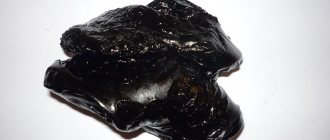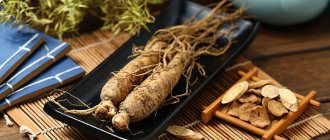Glycerin is a colorless and odorless liquid, slightly sweet and has a viscous consistency. In the modern world, this type of alcohol has become quite widespread - from industry to medicine. Glycerin is also actively used in cosmetics, the benefits and harms of which are controversial among eco-naturalists. Glycerin has unique properties that give it such versatility. It is a good solvent, hygroscopic (retains moisture), has an antiseptic effect, and softens. Able to regulate the viscosity of emulsions and combine liquids that are difficult to mix in one bottle. Usually such universal substances, which can be used almost anywhere, cause concern. Well, how can one and the same substance be used both in industry and in cosmetics - areas that are incompatible with each other... We will examine whether there is a catch here and whether there is harm in glycerin for us in this article.
Glycerin in cosmetics - benefits and harms
Glycerin was discovered in 1779 by German scientist Karl Scheele. Scheele obtained this substance by heating olive oil with iron oxide added to it. The result was a viscous, transparent solution with a slightly sweet taste. This is where the name came from - the word “glycos” in ancient Greek is translated as “sweet”. The properties of glycerin were studied in detail in 1811 by Michel Chevrel, a chemist from France. Largely thanks to his discoveries, this liquid has become so widespread in all spheres of human life.
Where is glycerin used?
Bubble
For little children, soap bubbles are a great joy. You can learn to make them yourself at home.
To do this you need glycerin, a few ingredients and desire.
The presence of glycerin in the solution for soap bubbles is due to its “fixing” effect. The walls of the soap bubble are strengthened and it flies for a long time without bursting.
At the glycerol level, the fixing properties are inherent in sugar syrup and gelatin. Soap experts say you can use ammonia detergent or polyvinyl alcohol. The basis of many recipes is the “Fairy” remedy; it has been tested in practice.
It should be warned that you should not overdo it with glycerin. The bubbles may turn out to be too strong and will have difficulty inflating.
Tips for preparing a solution for soap bubbles:
1. The basis is soft water. Boiled or distilled is recommended.
2. It should be warm or hot.
3. Since the bubbles are made for children, safe ingredients should be used, such as baby shampoo.
4. The solution should be stirred so that there is less foam. This is a very important point in properly preparing the mixture.
5. At the end of cooking, the mixture should be infused.
| Distilled water | Soap base | Glycerol | Sugar | Gelatin | Baking powder | |
| Soap mixture with sugar | 12 | 2 | 1 | 1 | — | 0,2 |
| Sugar free soap mixture | 6 | 2 | 1 | — | — | — |
| Giant bubbles | 8 | 2 | 1,5 | 0,5 | 0,5 | — |
The table shows three recipes with different ingredients for making a mixture of soap bubbles.
How to make soap bubbles
Glycerin in cosmetics: why is it needed?
The cosmetics industry has not been left behind. And manufacturers of creams, lipsticks and other personal care products also include this substance in their products. But how can such a component benefit our skin?
Glycerin in cosmetics is used for:
- Skin moisturizing. As noted above, glycerin takes moisture from the environment and gives it to the skin. It is able to penetrate very deeply into the epidermis, saturating all its layers with moisture. There is only one warning: if the air is dry, glycerin will begin to draw water FROM the skin. And this already threatens you with dryness and other unpleasant sensations. To avoid such an undesirable effect, drink enough water and maintain constant air humidity of at least 65%. A humidifier, which can be purchased at any electronics and household appliances store, will help you with this.
- Protection. Glycerin creates a thin film on the face that locks in the moisture and beneficial substances contained in the cream, preventing them from evaporating.
- Mitigation. This liquid perfectly softens the skin, making it softer and velvety to the touch. If you have sensitive, irritated and dry skin, then regular soap should be replaced with glycerin soap. It will help relieve dryness, eliminate irritation and itching.
- Replenishing the lack of glycerol in cells. Our body also produces glycerol. It helps water circulate in cell membranes, helping to transport water into cells through special channels - aquaporins. Therefore, care products with glycerin must be used to ensure the correct course of this process.
- Care for dry hair and eliminate dandruff and itchy scalp. Thanks to their ability to retain moisture, shampoos, balms and masks with glycerin moisturize the hair and scalp well.
Homemade cosmetics
Among homemade cosmetics, homemade soap with this moisturizing component is very popular. The advantages of home remedies are confidence in their composition and the ability to add any useful ingredient, for example, cosmetic clay, milk, vitamin E, herbal infusions, and so on.
Making homemade glycerin soap is very simple. It requires glycerol in bars, ethyl alcohol in a spray bottle, aromatic oil and a plastic form:
- melt the bar in a water bath and add a few drops of aromatic oil;
- Apply alcohol from a spray bottle to the surface of the mold;
- pour liquid glycerin into the mold;
- Spray with alcohol again;
- let harden and remove from mold.
On this simple basis, you can create a variety of options, experimenting with color and composition. Glycerin homemade soap is great for daily use. Its advantages:
- Suitable for sensitive skin.
- Improves the condition of the epidermis and is approved for use in psoriasis and eczema.
Homemade glycerin soap
To rejuvenate the skin, you can prepare a mask of glycerin and honey:
- mix liquid propanetriol and honey in equal parts;
- apply to clean skin before bed;
- Wash your face with warm water in the morning.
Are cosmetics without glycerin safe?
When choosing glycerin-free preparations, you need to take into account that instead of this component, mineral oils can be used as a necessary moisturizer and solvent. In many cases, they have an even worse effect on the skin.
Glycerin in cosmetics - useful tips
By the way, in Soviet times natural glycerin was sold in pharmacies. It was very common among ordinary citizens as a natural moisturizer and skin softener. Now this product can also be found in the pharmacy, but cosmetologists still do not recommend using it in its pure form. Studies have shown that in creams and other cosmetics the proportion of glycerin should not exceed 7%. Only then will the beneficial effect be maximum. Pay attention to the composition of the product you purchase. This component should be as close to the end as possible, since the ingredients in the cream are always listed in descending order. For the production of cosmetics, natural, highly purified vegetable glycerin is used - it is completely safe. Again, provided that the manufacturer has not gone too far with its quantity.
It is worth saying that due to the hygroscopicity of this type of alcohol, cosmetics with it are not recommended to be used during the heating season. Since batteries dry out the air very much, the cream will most likely draw moisture from the skin and release it to the environment. And not to moisturize your face. As a substitute in the cold season, you can use cosmetics with hyaluronic and alginate acid, collagen, chitosan, and sorbitol.
Properties
The use of glycerin for cosmetic purposes is associated with some of its physical and chemical properties:
- hygroscopicity, that is, the ability to retain water well (hyaluronic acid, propylene glycol, glycolic acid, sodium hyaluronate, sorbitol, which are also often included in cosmetics, have a similar property);
- absence of a protein component, therefore non-allergenic;
- chemical resistance, which in practice means the impossibility of damaging the cell membranes of the epidermis and mucous membranes;
- good solubility, making it possible to use it in most cosmetic products;
- emulsifying ability, increasing the cleaning activity of surfactants.
Contrary to popular belief, glycerol does not dry out the dermis even at low ambient humidity, provided its safe concentration is maintained. Saturating the deep layers of the epidermis with moisture helps smooth out wrinkles, improve metabolism, and restore a healthy complexion.
Its use simultaneously with emollients makes the dermis elastic. Propanetriol enhances the penetration of active cosmetic components into the deep layers of the skin, protects the surface of the epidermis from the penetration of pathogenic microorganisms, the appearance of microtraumas and drying out under the influence of hot air.
Why is glycerin used in cosmetics?
It is included in a variety of products as a solvent to reduce the viscosity of the main ingredients, a component of perfume additives, and a substance with a caring effect. Glycerin, which is included in hair cosmetics, has a good conditioning effect, but does not dry out the hair follicles.
Propanetriol is present in cell membranes, so it is a natural substance for skin tissue.
Natural cosmetic glycerin
You might be interested in: Is alcohol in cosmetics harmful?
Glycerin in cosmetics: benefits and harm - summing up
In conclusion, it is worth saying that in reasonable concentrations, glycerin is a good helper for the skin. It is useful and can have a beneficial effect on the epidermis. Today, this substance is an extremely common additive, without which it is difficult to imagine the modern cosmetic industry. But in order not to harm yourself, it is important to remember the rules for the safe use of products with this component. High-quality vegetable glycerin in cosmetics must be obtained from natural natural oils and undergo a high degree of purification. Then a cream containing it will bring your skin the necessary nourishment, protection and prolong its youth.
Thanks for sharing with your friends!
- 2
Natural glycerin
Whatever the origin of glycerol, its simple chemical composition remains unchanged. Natural or vegetable glycerin is obtained from refined and chemically treated oils (coconut, palm and others). This process requires significant financial costs, so products labeled “vegetable glycerin” are significantly more expensive than regular ones.
Cosmetics brands with natural glycerol:
- Andalou Naturals;
- NutriBiotic;
- Levrana;
- Agor;
- mi&ko;
- Nubian Heritage;
- Caudalie;
- Guam;
- Heliabrine and others.
1. Soap-free skin cleanser NutriBiotic, Skin Cleanser, Fragrance Free, Non-Soap 2. Hand cream Lavender Andalou Naturals 3. Anti-aging face cream Guam
Main conclusions
Glycerin can be used for many purposes. You learned this from the review above. It is inexpensive and quite accessible, helps maintain skin condition as part of cosmetic products.
Will delight the kids with soap bubbles. Glycerin will improve the shine of your car and help in removing stains from clothes, cleaning furniture and cleaning the house.
If the article was useful to you, share your impressions in the comments.
Method 5 for shine
To give your car a shine not only inside, but also outside, try diluting glycerin with water in the following proportion:
- 200 ml water;
- 40 ml glycerin.
The mixture must be applied to the cleaned surface of the car. After the next wash of your favorite car, dampen a slightly clean rag in the freshly prepared solution and cover the entire surface of the car, including the windows, with the mixture. Minor scratches will disappear from the surface of the body, and the paint will noticeably freshen, even the matte finish begins to shine in the sun. This product will help extend the life of your car's paintwork.
It is better to polish a car at above-zero temperatures and indoors.
Day or night?
When choosing a cream with glycerin, give preference to the drug for daily use. Don't forget that at night our skin starts an enhanced detoxification process. While you sleep, waste and toxins accumulated over a long day come out through your pores, along with sweat and sebum.
If you cover your face with glycerin cream, don't be surprised if you wake up to find bags under your eyes and puffiness. The created film will prevent harmful substances and moisture from escaping, making you look like you cried all night.
Use in the food industry
Dairy products, including cheese, yogurt, milk powder, and cream, are among the potential sources of glycerol. This nutritional supplement can also be found in condensed milk, whey products, pudding and milk drinks. Processed meats, soy products, processed seafood, dried eggs, canned eggs and egg desserts may also contain this additive.
Vegetables and fruits generally do not contain glycerin unless they are processed. Some examples of products that may contain E422 include:
- dried vegetables;
- canned vegetables;
- processed fruits;
- pre-cooked vegetables;
- sauces containing vegetables.
- alcoholic drinks;
- sauces, vinegar, mustard, seasonings;
- peanut butter;
- candies.











